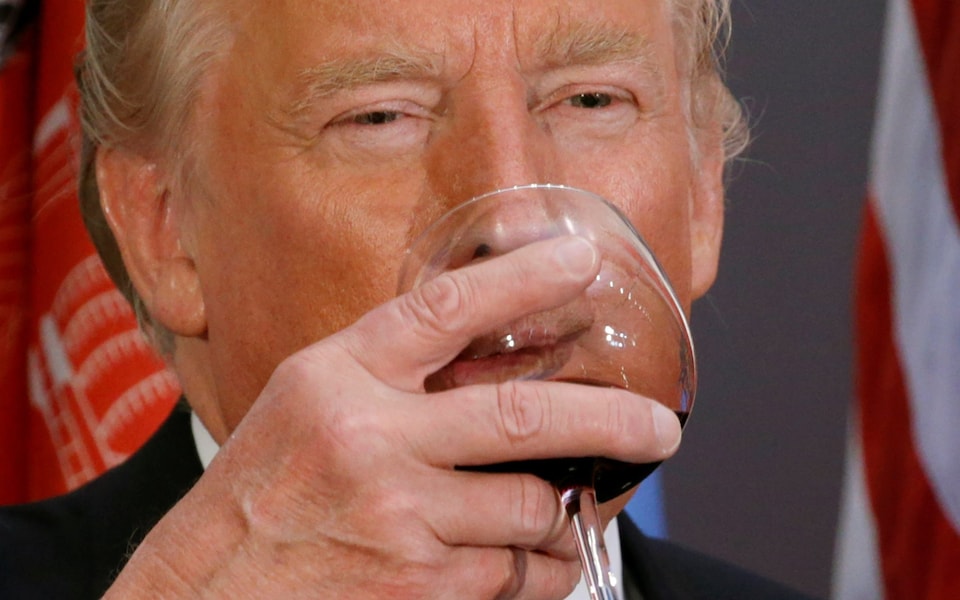In a recent post on Truth Social, former U.S. President Donald Trump threatened to impose a 200% tariff on alcoholic beverages imported from the European Union unless the EU removes its 50% tariff on American whiskey. This bold move has sparked debates not only about the direct economic implications but also about the broader consequences for global trade, particularly in the wine industry. Trump’s remarks raise concerns regarding how this could reshape export markets, increase illicit trade, and potentially alter consumer loyalty across Europe and the U.S.
Reshaping Export Markets
The U.S. has long been one of the largest importers of European wines, with French, Italian, and Spanish wines representing a significant share of this trade. According to recent data, the imbalance between the U.S. and European wine exports shows that European countries have historically benefitted from the trade, with the value of European wine exports far outweighing imports from the U.S. However, a sudden tariff of up to 200% could drastically shift these dynamics.
If this threat materializes, it could lead to a significant decrease in the volume of European wines reaching the American market. This reduction would not only hurt the profits of major wine-exporting countries like France, Italy, and Spain, but it could also redirect trade flows. As American wines face limited access to the European market due to tariffs, the demand for wines from other non-EU countries might rise, including from regions like South America, Australia, and New Zealand. These countries, which already have trade agreements in place with the EU, may gain an advantage in this shifting landscape.
Strengthening of Illicit Trade
With higher tariffs on European wines entering the U.S., there could be a significant rise in smuggling and black-market activities. The price hikes resulting from tariffs may push consumers towards cheaper, illicit alternatives, undermining the wine industry. This is not a new issue; the wine industry has already faced challenges with smuggling, especially when tariffs and taxes drive up prices to unsustainable levels. If legitimate imports are priced too high, the temptation to circumvent legal channels will only grow, strengthening underground markets in both Europe and the U.S.
Consumer Loyalty vs. Price Sensitivity
Trump’s remarks also bring into focus the question of consumer behavior. While some may argue that a steep price increase would push consumers to choose cheaper options or even domestic alternatives, the influence of brand loyalty cannot be underestimated. For many American wine consumers, European wines — particularly those from prestigious regions like Champagne, Bordeaux and Tuscany — are considered premium products. This loyalty could mitigate some of the impacts of increased tariffs.
However, a long-term trade dispute and consistent tariff hikes might alter the perceptions of European wines, leading consumers to explore more cost-effective domestic options or even wines from countries with more favorable trade relations. It’s crucial to note that while brand loyalty is strong, consumers are also price-sensitive, and the possibility of a drastic price increase could push some to abandon European wines altogether in favor of alternatives, particularly if they are similarly perceived in quality.
Potential Losses for European Wine-Producing Countries
If these tariffs are implemented, the primary European wine-producing countries would face substantial losses:
- France: Known for its world-renowned wine regions like Champagne, Bordeaux and Burgundy, France would likely suffer the most from these tariffs. U.S. consumers who enjoy fine French wines could turn to other markets or opt for domestic options due to the high tariffs, significantly reducing French wine exports.
- Italy: Italy, with its vast range of wines from Tuscany, Piedmont, and Veneto, could also see a dramatic fall in sales to the U.S. market. While Italy’s wine exports are diverse, a reduction in exports to the U.S. would have a ripple effect on the overall wine economy, particularly affecting smaller producers.
- Spain: Spain, a major exporter of wines to the U.S., might face a challenging period as well. Spanish wines, known for their variety and affordability, could struggle to compete against U.S.-produced wines if tariffs cause European wines to skyrocket in price.
A Look Ahead: Trade Wars and Global Wine Trade
The long-term effects of this tariff escalation could go beyond simple trade disruption. It could significantly impact the future structure of the global wine market. For example, increased protectionism, as seen in this trade dispute, could prompt other countries to reconsider their positions on trade agreements and tariffs. The EU may retaliate, and other global wine producers could take advantage of this uncertainty, filling the gaps left by European wines in the U.S. market.
Moreover, this tariff threat has broader implications for the way international trade is conducted, with the potential for countries to adopt more aggressive tariffs and trade restrictions in other sectors. As the wine market in both Europe and the U.S. deals with these challenges, the global economic climate will likely continue to shift.
Conclusion
Trump’s tariff threat has the potential to reshape the European wine export market, particularly to the U.S., by creating price volatility, encouraging illicit trade, and possibly diminishing brand loyalty. While European wines have long held a strong presence in the American market, the combination of high tariffs and a shift in consumer behavior could lead to significant economic losses for major wine-producing countries. How the EU responds to this challenge — and how wine consumers adapt — will play a pivotal role in determining the future dynamics of global wine trade.
#trump #tariffs #wineexport #tradewar #winebusiness

Donald Trump takes part in a toast during a luncheon hosted by the Secretary General of the United Nations in New York Credit: Reuters